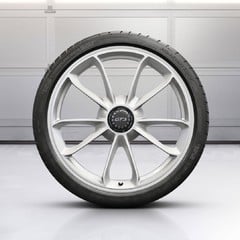Your Guide to Buying a Used Car
8 steps you should take when purchasing a pre-owned vehicle
For many of us, buying a used car can be a daunting task due to the high risk involved. Get it right and you could save yourself thousands of pounds and enjoy years of reliable transport. Make the wrong choice, however, and you may end up with an old banger that drains your bank account through costly repairs.
With so much on the line, it’s crucial that you take the right precautionary actions when buying a pre-owned vehicle. So to make sure your purchase is a successful one, we’ve created this guide to walk you through the key steps and considerations for buying a used car.
Step-by-step guide to buying a used car
1. Set your budget
The first step in buying a used car is to establish a budget. Determine how much you are willing to spend and make sure you stick to it. Remember to factor in not only the purchase price of the vehicle but other expenses that come with buying a car like insurance, vehicle tax, and MOT if it's needed. Having a clear budget in mind will help you narrow down your options and prevent you from overspending.
2. Do your research
Before you start visiting dealerships or browsing online listings, investigate the make and model of the car you are interested in. Look at reviews and common problems associated with particular models. This will help you to avoid picking up a car that has obvious downfalls.
Be sure to research the car's market value as well. There are online tools that can help provide an estimate of what a car is worth based on its age, mileage, condition, and specifications. This assists you in determining if an asking price is fair or not.
3. Choose the right seller
When it comes to buying a used car, you have several options: purchase from a dealership, a private seller, or through an approved used car scheme. Each choice has its pros and cons.
Dealerships like us stock approved pre-inspected used cars with warranties, while private sellers often offer lower prices but come with more risk. Take your time to weigh up each option and choose the one that suits your needs and comfort level the most.
4. Inspect the car
Never skip a thorough inspection of the car you are interested in. If you’re not familiar with the ins and outs of a motor, then consider getting a pre-purchase inspection. This will help you to spot any problems not immediately obvious to you as an untrained car buyer. Issues like engine troubles, transmission problems, leaks, and worn brakes, just to name a few.
You’ll find that many dealerships will want you to have confidence in the car you are buying, so many have already conducted comprehensive inspections of their own — like we do here at 1 Stop Car Sales.
5. Check the history
Upon inspection, you should ask the seller for the complete service and MOT history of the car. This will show you how well it has been cared for and if the car had any major repairs or replacements. You should also check the mileage on the odometer and compare it with the service records to see if they match.
At the same time, you should get a VIN check. The VIN (vehicle identification number) can tell you the specifications of your vehicle and whether it has ever been stolen or involved in any accidents. Ensure this number matches the documents provided by the seller as well — it can be found in the V5C logbook.
6. Go for a test drive
It’s time to go for a ride! A test drive is one of the most important aspects of buying a used car as it allows you to get a feel for the vehicle's performance, handling, and comfort.
It also gives you a chance to evaluate whether it meets your wants and expectations. Pay attention to any unusual noises or warning lights and make sure the car drives smoothly and the brakes and steering perform adequately.
7. Negotiate the price
Once you’ve done all the checks and you’re satisfied with the condition of the car, have a go at negotiating the price. You can use your research on the market value and any issues or defects you found to haggle with the seller. If they don’t seem to budge on price, then look to weave in some additional extras such as warranty.
In the case that you’re purchasing a car on finance, make sure you strike a deal that is attainable in the long run and that you’ve considered all the small print. Remember, don’t be afraid to walk away if the price doesn’t match your budget.
8. Complete the paperwork
Well done! You’ve found the car you want at the price you can afford. Now’s the time to finalise the deal by signing a contract and transferring the ownership and registration of the car.
You must get hold of all the documents and keys from the seller, such as the V5C logbook, the MOT certificate, the service history, and the warranty (if included). If you plan on driving the car straightaway, then make sure you’ve arranged insurance and paid the vehicle tax prior.
Buy with confidence at 1 Stop Car Sales
If you still have some concerns about buying a used car, fear not! Here at 1 Stop Car Sales, we are aware of all the potential worries you may have. That’s why we ensure our stock is maintained and prepared to the highest possible standards through our 114-point pre-delivery inspection checks. Don’t be afraid to get in touch with any questions you may have and we'll be only too happy to help.









